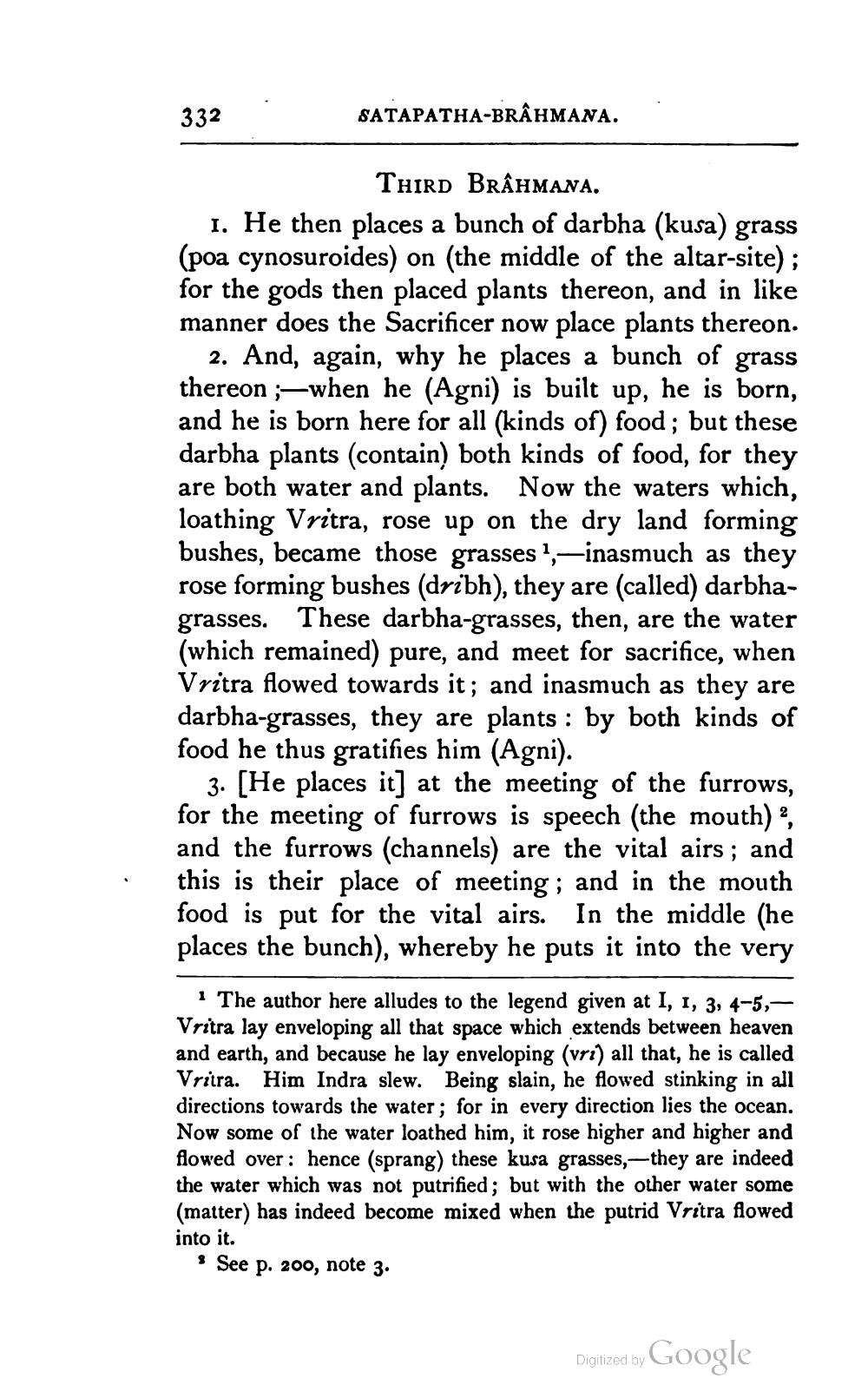________________
332
SATAPATHA-BRAHMANA.
THIRD BRAHMANA.
1. He then places a bunch of darbha (kusa) grass (poa cynosuroides) on (the middle of the altar-site); for the gods then placed plants thereon, and in like manner does the Sacrificer now place plants thereon.
2. And, again, why he places a bunch of grass thereon; when he (Agni) is built up, he is born, and he is born here for all (kinds of) food; but these darbha plants (contain) both kinds of food, for they are both water and plants. Now the waters which, loathing Vritra, rose up on the dry land forming bushes, became those grasses1,-inasmuch as they rose forming bushes (dribh), they are (called) darbhagrasses. These darbha-grasses, then, are the water (which remained) pure, and meet for sacrifice, when Vritra flowed towards it; and inasmuch as they are darbha-grasses, they are plants: by both kinds of food he thus gratifies him (Agni).
3. [He places it] at the meeting of the furrows, for the meeting of furrows is speech (the mouth) 2, and the furrows (channels) are the vital airs; and this is their place of meeting; and in the mouth food is put for the vital airs. In the middle (he places the bunch), whereby he puts it into the very
1 The author here alludes to the legend given at I, 1, 3, 4-5,Vritra lay enveloping all that space which extends between heaven and earth, and because he lay enveloping (vrz) all that, he is called Vritra. Him Indra slew. Being slain, he flowed stinking in all directions towards the water; for in every direction lies the ocean. Now some of the water loathed him, it rose higher and higher and flowed over: hence (sprang) these kusa grasses, they are indeed the water which was not putrified; but with the other water some (matter) has indeed become mixed when the putrid Vritra flowed
into it.
See p. 200, note 3.
Digitized by Google




